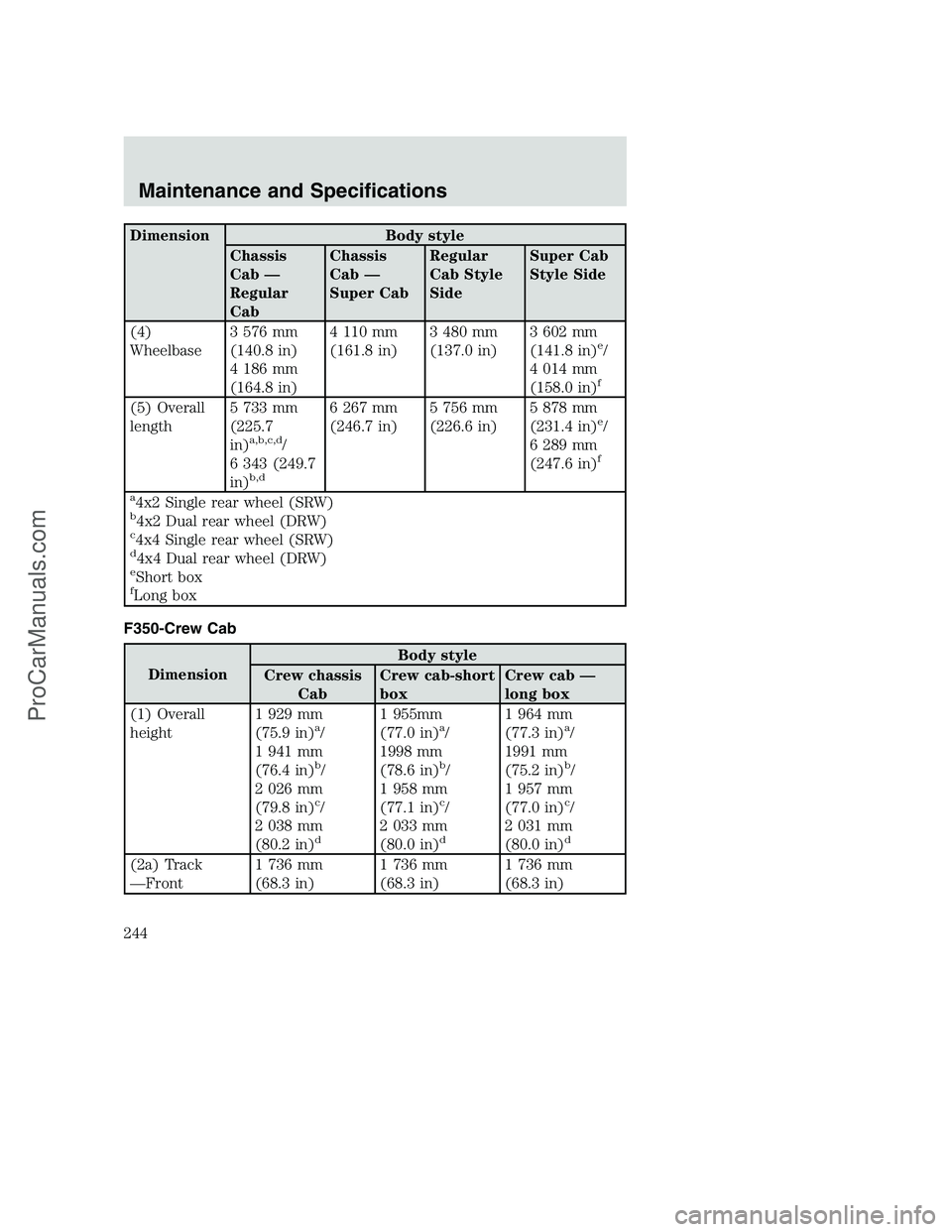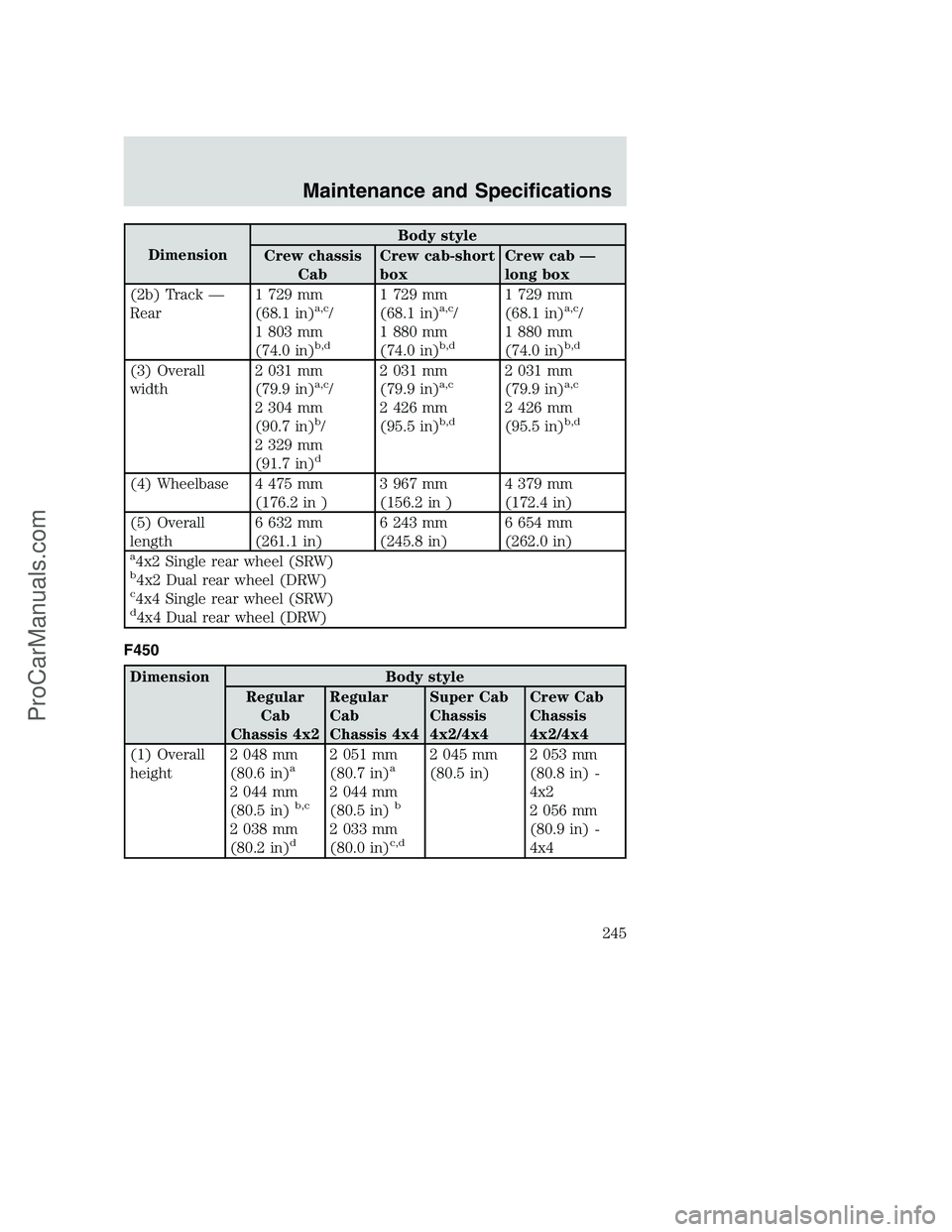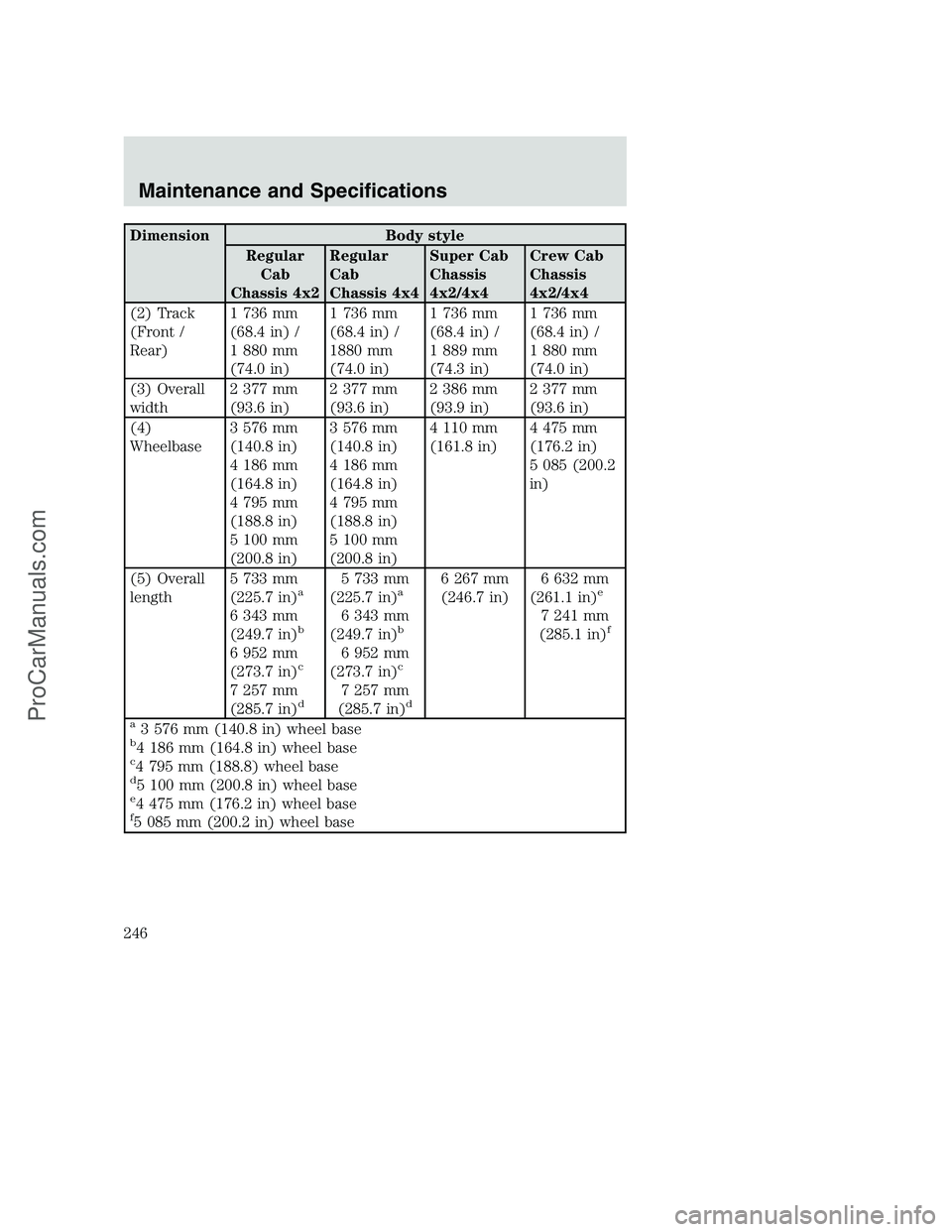Page 72 of 264

The front and rear outboard safety restraints in the vehicle are
combination lap and shoulder belts. The front passenger and rear seat
outboard safety belts have two types of locking modes described below:
Vehicle sensitive mode
This is the normal retractor mode, which allows free shoulder belt length
adjustment to your movements and locking in response to vehicle
movement. For example, if the driver brakes suddenly or turns a corner
sharply, or the vehicle receives an impact of approximately 8 km/h
(5 mph) or more, the combination safety belts will lock to help reduce
forward movement of the driver and passengers.
On SuperCab and CrewCab models, the front seat belt system can also
be made to lock manually by quickly pulling on the shoulder belt.
Rear seat belts (if equipped) cannot be made to lock up by pulling
quickly on the belt.
Automatic locking mode
The automatic locking mode is not available on the driver safety belt.
When to use the automatic locking mode
In this mode, the shoulder belt is automatically pre-locked. The belt will
still retract to remove any slack in the shoulder belt. The automatic
locking mode is not available on the driver safety belt.
This mode should be usedany timea child safety seat is installed in a
passenger front or outboard rear seating position (if equipped). Children
12 years old and under should be properly restrained in the rear seat
whenever possible. Refer toSafety restraints for childrenorSafety
seats for childrenlater in this chapter.
How to use the automatic locking mode
•Buckle the combination lap and
shoulder belt.
Seating and Safety Restraints
72
ProCarManuals.com
Page 76 of 264

•4–door Super Cab (if equipped)
To adjust the shoulder belt height, push the button and slide the height
adjuster up or down. Release the button and pull down on the height
adjuster to make sure it is locked in place.
Position the safety belt height adjusters so that the belt rests
across the middle of your shoulder. Failure to adjust the safety
belt properly could reduce the effectiveness of the seat belt and
increase the risk of injury in a collision.
Lap belts
Adjusting the center lap belt
The lap belt does not adjust automatically.
The lap belt should fit snugly and as low as possible around the
hips, not across the waist.
Insert the tongue into the correct
buckle (the buckle closest to the
direction the tongue is coming
from). To lengthen the belt, turn the
tongue at a right angle to the belt
and pull across your lap until it
reaches the buckle. To tighten the
belt, pull the loose end of the belt
through the tongue until it fits snugly across the hips.
Seating and Safety Restraints
76
ProCarManuals.com
Page 187 of 264

The CAMVAP program is a straight-forward and relatively speedy
alternative to resolve a disagreement when all other efforts to produce a
settlement have failed. This procedure is without cost to you and is
designed to eliminate the need for lengthy and expensive legal
proceedings.
In the CAMVAP program, impartial third-party arbitrators conduct
hearings at mutually convenient times and places in an informal
environment. These impartial arbitrators review the positions of the
parties, make decisions and, when appropriate, render awards to resolve
disputes. CAMVAP decisions are fast, fair, and final; the arbitrator’s
award is binding both to you and Ford of Canada.
CAMVAP services are available in all territories and provinces. For more
information, without charge or obligation, call your CAMVAP Provincial
Administrator directly at 1-800-207-0685.
GETTING ASSISTANCE OUTSIDE THE U.S. AND CANADA
Before exporting your vehicle to a foreign country, contact the
appropriate foreign embassy or consulate. These officials can inform you
of local vehicle registration regulations and where to find unleaded fuel.
If you cannot find unleaded fuel or can only get fuel with an anti-knock
index lower than is recommended for your vehicle, contact a district or
owner relations/customer relationship office.
The use of leaded fuel in your vehicle without proper conversion may
damage the effectiveness of your emission control system and may cause
engine knocking or serious engine damage. Ford Motor Company/Ford of
Canada is not responsible for any damage caused by use of improper
fuel.
In the United States, using leaded fuel may also result in difficulty
importing your vehicle back into the U.S.
If your vehicle must be serviced while you are traveling or living in
Central or South America, the Caribbean, or the Middle East, contact the
nearest Ford dealership. If the dealership cannot help you, write or call:
FORD MOTOR COMPANY
WORLDWIDE DIRECT MARKET OPERATIONS
1555 Fairlane Drive
Fairlane Business Park #3
Allen Park, Michigan 48101
U.S.A.
Telephone: (313) 594-4857
FAX: (313) 390-0804
Customer Assistance
187
ProCarManuals.com
Page 241 of 264

VEHICLE DIMENSIONS
F250–Regular and Super Cab
Dimension Body style
Regular
Cab 4x2Regular
Cab 4x4Super Cab
4x2Super Cab
4x4
(1) Overall
height1935 mm
(76.2 in)2 005 mm
(78.9 in)1 943 mm
(76.5 in)
d2 008 mm
(79.0 in)d
(2) Track
(Front /
Rear)1 736 mm
(68.3 in) /
1 729 mm
(68 in)1 736 mm
(68.3 in) /
1 729.3 mm
(68 in)1 736 mm
(68.3 in) /
1 729.3 mm
(68 in)1 736 mm
(68.3 in) /
1 729.3 mm
(68 in)
(3) Overall
width2 031 mm
(79.9 in)
a
2426 mm
(95.5 in)b
2 031 mm
(79.9 in)a
2426 mm
(95.5 in)b
2 031 mm
(79.9 in)a
2426 mm
(95.5 in)b
2 031 mm
(79.9 in)a
2426 mm
(95.5 in)b
(4)
Wheelbase3 479.8 mm
(137 in)3 479.8 mm
(137 in)3 610.7 mm
(141.8 in)c
4 013.2 mm
(158 in)d
3 610.7 mm
(141.8 in)c
4 013.2 mm
(158 in)d
(5) Overall
length5 756 mm
(226.6 in)5 756 mm
(226.6 in)5 878 mm
(231.4 in)c
6 289 mm
(247.6 in)d
5 878 mm
(231.4 in)c
6 289 mm
(247.6 in)d
a
Single rear wheel (SRW)bDual rear wheel (DRW)cShort Wheel Base (SWB)dLong wheel base (LWB)
Maintenance and Specifications
241
ProCarManuals.com
Page 242 of 264
F250-Crew Cab
Dimension Body style
Crew Cab
4x2/ Short
boxCrew Cab
4x4/ Short
boxCrew Cab
4x2/ Long
boxCrew Cab
4x4/ Long
box
(1) Overall
height1960 mm
(77.2 in)2 027 mm
(79.8 in)1 957 mm
(77.0 in)2 022 mm
(76.6 in)
(2) Track
(Front /
Rear)1 736 mm
(68.3 in) /
1 729 mm
(68.1 in)1 736 mm
(68.3 in) /
1 729 mm
(68.1 in)1 736 mm
(68.3 in) /
1 729 mm
(68.1 in)1 736 mm
(68.3 in) /
1 729 mm
(68.1 in)
(3) Overall
width2 031 mm
(79.9 in)2 031 mm
(79.9 in)2 031 mm
(79.9 in)2 031 mm
(79.9 in)
(4)
Wheelbase3 967 mm
(156.2 in)3 967 mm
(156.2 in)4 379 mm
(172.4 in)4 379 mm
(172.4 in)
(5) Overall
length6 243 mm
(245.8 in)6 243 mm
(245.8 in)6 654 mm
(262 in)6 654 mm
(262 in)
Maintenance and Specifications
242
ProCarManuals.com
Page 244 of 264

Dimension Body style
Chassis
Cab —
Regular
CabChassis
Cab —
Super CabRegular
Cab Style
SideSuper Cab
Style Side
(4)
Wheelbase3 576 mm
(140.8 in)
4 186 mm
(164.8 in)4 110 mm
(161.8 in)3 480 mm
(137.0 in)3 602 mm
(141.8 in)
e/
4 014 mm
(158.0 in)
f
(5) Overall
length5 733 mm
(225.7
in)
a,b,c,d/
6 343 (249.7
in)
b,d
6 267 mm
(246.7 in)5 756 mm
(226.6 in)5 878 mm
(231.4 in)e/
6 289 mm
(247.6 in)
f
a
4x2 Single rear wheel (SRW)b4x2 Dual rear wheel (DRW)c4x4 Single rear wheel (SRW)d4x4 Dual rear wheel (DRW)eShort boxfLong box
F350-Crew Cab
DimensionBody style
Crew chassis
CabCrew cab-short
boxCrew cab —
long box
(1) Overall
height1 929 mm
(75.9 in)
a/
1 941 mm
(76.4 in)
b/
2 026 mm
(79.8 in)
c/
2 038 mm
(80.2 in)
d
1 955mm
(77.0 in)a/
1998 mm
(78.6 in)
b/
1 958 mm
(77.1 in)
c/
2 033 mm
(80.0 in)
d
1 964 mm
(77.3 in)a/
1991 mm
(75.2 in)
b/
1 957 mm
(77.0 in)
c/
2 031 mm
(80.0 in)
d
(2a) Track
—Front1 736 mm
(68.3 in)1 736 mm
(68.3 in)1 736 mm
(68.3 in)
Maintenance and Specifications
244
ProCarManuals.com
Page 245 of 264

DimensionBody style
Crew chassis
CabCrew cab-short
boxCrew cab —
long box
(2b) Track —
Rear1 729 mm
(68.1 in)
a,c/
1 803 mm
(74.0 in)
b,d
1 729 mm
(68.1 in)a,c/
1 880 mm
(74.0 in)
b,d
1 729 mm
(68.1 in)a,c/
1 880 mm
(74.0 in)
b,d
(3) Overall
width2 031 mm
(79.9 in)a,c/
2 304 mm
(90.7 in)
b/
2 329 mm
(91.7 in)
d
2 031 mm
(79.9 in)a,c
2 426 mm
(95.5 in)b,d
2 031 mm
(79.9 in)a,c
2 426 mm
(95.5 in)b,d
(4) Wheelbase 4 475 mm
(176.2 in )3 967 mm
(156.2 in )4 379 mm
(172.4 in)
(5) Overall
length6 632 mm
(261.1 in)6 243 mm
(245.8 in)6 654 mm
(262.0 in)
a4x2 Single rear wheel (SRW)b4x2 Dual rear wheel (DRW)c4x4 Single rear wheel (SRW)d4x4 Dual rear wheel (DRW)
F450
Dimension Body style
Regular
Cab
Chassis 4x2Regular
Cab
Chassis 4x4Super Cab
Chassis
4x2/4x4Crew Cab
Chassis
4x2/4x4
(1) Overall
height2 048 mm
(80.6 in)
a
2 044 mm
(80.5 in)b,c
2 038 mm
(80.2 in)d
2 051 mm
(80.7 in)a
2 044 mm
(80.5 in)b
2 033 mm
(80.0 in)c,d
2 045 mm
(80.5 in)2 053 mm
(80.8 in) -
4x2
2 056 mm
(80.9 in) -
4x4
Maintenance and Specifications
245
ProCarManuals.com
Page 246 of 264

Dimension Body style
Regular
Cab
Chassis 4x2Regular
Cab
Chassis 4x4Super Cab
Chassis
4x2/4x4Crew Cab
Chassis
4x2/4x4
(2) Track
(Front /
Rear)1 736 mm
(68.4 in) /
1 880 mm
(74.0 in)1 736 mm
(68.4 in) /
1880 mm
(74.0 in)1 736 mm
(68.4 in) /
1 889 mm
(74.3 in)1 736 mm
(68.4 in) /
1 880 mm
(74.0 in)
(3) Overall
width2 377 mm
(93.6 in)2 377 mm
(93.6 in)2 386 mm
(93.9 in)2 377 mm
(93.6 in)
(4)
Wheelbase3 576 mm
(140.8 in)
4 186 mm
(164.8 in)
4 795 mm
(188.8 in)
5 100 mm
(200.8 in)3 576 mm
(140.8 in)
4 186 mm
(164.8 in)
4 795 mm
(188.8 in)
5 100 mm
(200.8 in)4 110 mm
(161.8 in)4 475 mm
(176.2 in)
5 085 (200.2
in)
(5) Overall
length5 733 mm
(225.7 in)
a
6 343 mm
(249.7 in)b
6 952 mm
(273.7 in)c
7 257 mm
(285.7 in)d
5 733 mm
(225.7 in)a
6 343 mm
(249.7 in)b
6 952 mm
(273.7 in)c
7 257 mm
(285.7 in)d
6 267 mm
(246.7 in)6 632 mm
(261.1 in)e
7 241 mm
(285.1 in)f
a
3 576 mm (140.8 in) wheel baseb4 186 mm (164.8 in) wheel basec4 795 mm (188.8) wheel based5 100 mm (200.8 in) wheel basee4 475 mm (176.2 in) wheel basef5 085 mm (200.2 in) wheel base
Maintenance and Specifications
246
ProCarManuals.com